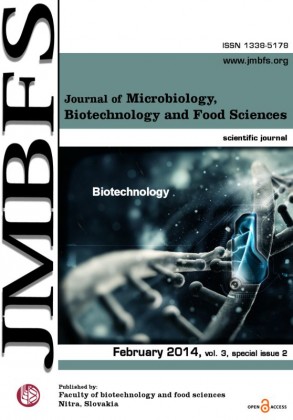THE INCREASING OF MILK PRODUCTIVITY OF YAROSLAVL BREED CATTLE DUE TO THE INCREASING GENETIC POTENTIAL UNDER VARIOUS KEEPING TECHNOLOGIES
Keywords:
Cattle, the realization of genetic potential, milk productivityAbstract
Milk is widely used as a food product in processed and unprocessed form or as raw materials for dairy and food industries. So indicators of dairy efficiency of cows have a direct influence on a profit of agricultural producers. The estimation of the indicators of milk production of cows with different level of thorough-bredness of the Holstein breed depending on keeping technology was conducted in the article. For statistical data in determining the strength of influence of factors procedure we used the procedure of generalized linear models – GLM in the complex «MATLAB 2000» to determine the strength of influence of factors for statistical processing. Breeding strategies for improving the genetic potential of the cows of the Yaroslavl breed Holstein -Yaroslavl hybrids used on the farms with technologies widely used in Russia was developed in the article. Our studies allow identifying components providing a significant effect on milk production of cattle. The most informative and productive factors were: yield of the first lactation, live weight of the first lactation, the level of thorough-bredness.Downloads
Download data is not yet available.
Downloads
Published
2014-02-01
How to Cite
Konovalov, A., & Malyukova, M. (2014). THE INCREASING OF MILK PRODUCTIVITY OF YAROSLAVL BREED CATTLE DUE TO THE INCREASING GENETIC POTENTIAL UNDER VARIOUS KEEPING TECHNOLOGIES. Journal of Microbiology, Biotechnology and Food Sciences, 3(special issue 2 (Biotechnology), 51–53. Retrieved from https://office2.jmbfs.org/index.php/JMBFS/article/view/7620
Issue
Section
Biotechnology
License
Copyright (c) 2014 Alexander Konovalov, Marina Malyukova

This work is licensed under a Creative Commons Attribution 4.0 International License.
All papers published in the Journal of Microbiology, Biotechnology and Food Sciences are published under a CC-BY licence (CC-BY 4.0). Published materials can be shared (copy and redistribute the material in any medium or format) and adapted (remix, transform, and build upon the material for any purpose, even commercially) with specifying the author(s).

